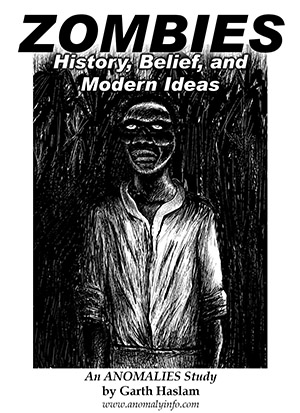1943, November 18: The Strange Death of Madge Knight
Madge Knight, age 45, lived in Aldingbourne, West Sussex, England, with her husband Herbert Edmund Knight. At the time of her death, she and her husband had her sister and her sister's husband -- Mr. and Mrs. Basil Moore -- staying with them. On the day in question, Mr. Knight and Mrs. Moore had taken a trip to London together, and arrived back at the home around tea-time (which, by English custom, would likely have been sometime between 3 PM and 5 PM).
Mr. and Mrs. Knight got into an argument, because she "was annoyed about something her husband had done in London"... and it was a large enough argument that the Moores decided to go out for the evening, so they left about 7:30PM. When they returned around 10:00PM, Mr. Knight had retired to bed upstairs in one of three bedrooms, and Mrs. Knight was waiting up for them to return. She was much calmer and had been drinking, but was not described as drunk. About 10:45, she had a "night cap" with the Moores (a final drink for the night), and around 11:00 everyone went to bed.
Sometime between 3:30 and 4:00AM, the Moores were awakened by screaming. Investigating, they found Mrs. Knight alone in the third bedroom on the bed, covered by the bed clothes (bedding) but otherwise bare. She was lying on her left side and the skin was peeled off her back. Mr. Moore, when questioned at the inquest, stated that judging by Mrs. Knight's groaning "he imagined she was in great pain." Mrs. Moore attended to Mrs. Knight while, strangely, Mr. Moore went back to bed.
In the morning sometime between 7:30 and 8:00, Mr. Moore called a doctor for help; but the doctor didn't arrive until 11:00AM, after a second phone call because he "did not understand that the first message which reached him was urgent." In the meantime, Mr. Knight awoke at 8:00AM; when he discovered his wife was burned "he was amazed and could not make out what had happened." The doctor, Dr. Sandlford, immediately gave Mrs. Knight morphine to relax the frantic woman and reduce her pain. He diagnosed her wounds as extensive burns on her back, but was then told that nothing in her room was burned (including the bed and bedding), there was no open flame, the Moores said they had not smelled anything burning during the night, and the burns seemed inconsistent with any of the electric heaters in the house.
A few days later, another doctor was consulted, Dr. H.W. Gordon, who felt the burns must have been caused by some form of corrosive liquid. When questioned by him about the burns, Mrs. Knight only replied that she had nothing to tell him. He advised she be taken to a hospital, which she was; and she died there on December 6 due to toxaemia, an infection of the wounds. The inquest followed shortly after, and the jury brought it in as an open verdict.
Many questions were unanswered by the testimony of the witnesses, such as why the doctor wasn't summoned much sooner, and why a woman who needed morphine to reduce pain did not go to the hospital immediately? Other problems were noted, and ignored... in a statement previous to the inquest, Mr. Knight told a Detective Sergeant investigating that he had heard the Moores go upstairs around 10:45PM, but when asked about this statement at the inquest by the Coroner, Mr. Knight said "that as his memory went he did not hear this." Perhaps he changed his testimony because it would be impossible to claim he slept through his wife's late night screams if he admitted he was awake enough to hear people come upstairs earlier... but this possibility was not pursued in the investigation at all. Nor was Mr. Moore's decision to go back to sleep questioned, or the reason the first call to the doctor somehow did not put across the urgency of the help required.
Overall, while the origins of Mrs. Knight's burns were never determined, it seems clear that the investigation simply assumed that no one in the house would have purposely hurt her and, therefore, the implied origin of being some sort of corrosive fluid that had to be applied to Mrs. Knight's back was ignored. So the main mystery in this case is the question of why no further investigation occurred when there were too many strange and conflicting details in the testimonies of the only people in the house with Mrs. Knight when she was burned by unknown means. I can only hope more information can be turned up.
Strange Re-Tellings
In 1945, Harry Price included Madge Knight's death in his book Poltergeist Over England, and wrote of Knight's burns in a section of his book concern with victims of 'poltergeist fire'... strongly implying his belief that Knight was a victim of a poltergeist, an impression that was helped along by his not mentioning any details of the case that might bring suspicion on her husband and family. This trimmed down version of the event by Price was picked up by other authors on anomalous topics, who trimmed it even more and eventually changed the account into a claim that Knight's burns were an example of Spontaneous Human Combustion, the proposed possibility that a human body, by some unknown means, could ignite itself from the inside. Both ideas appear to only work if initial facts of the case are completely ignored, so both ideas appear to be completely wrong.
Anomalies -- the Strange & Unexplained, as well as my other website -- Monsters Here & There -- are supported by patrons, people like you! All new Anomalies articles are now posted for my patrons only, along with exclusive content made just for them. You can become a patron for just $1 a month!
|








